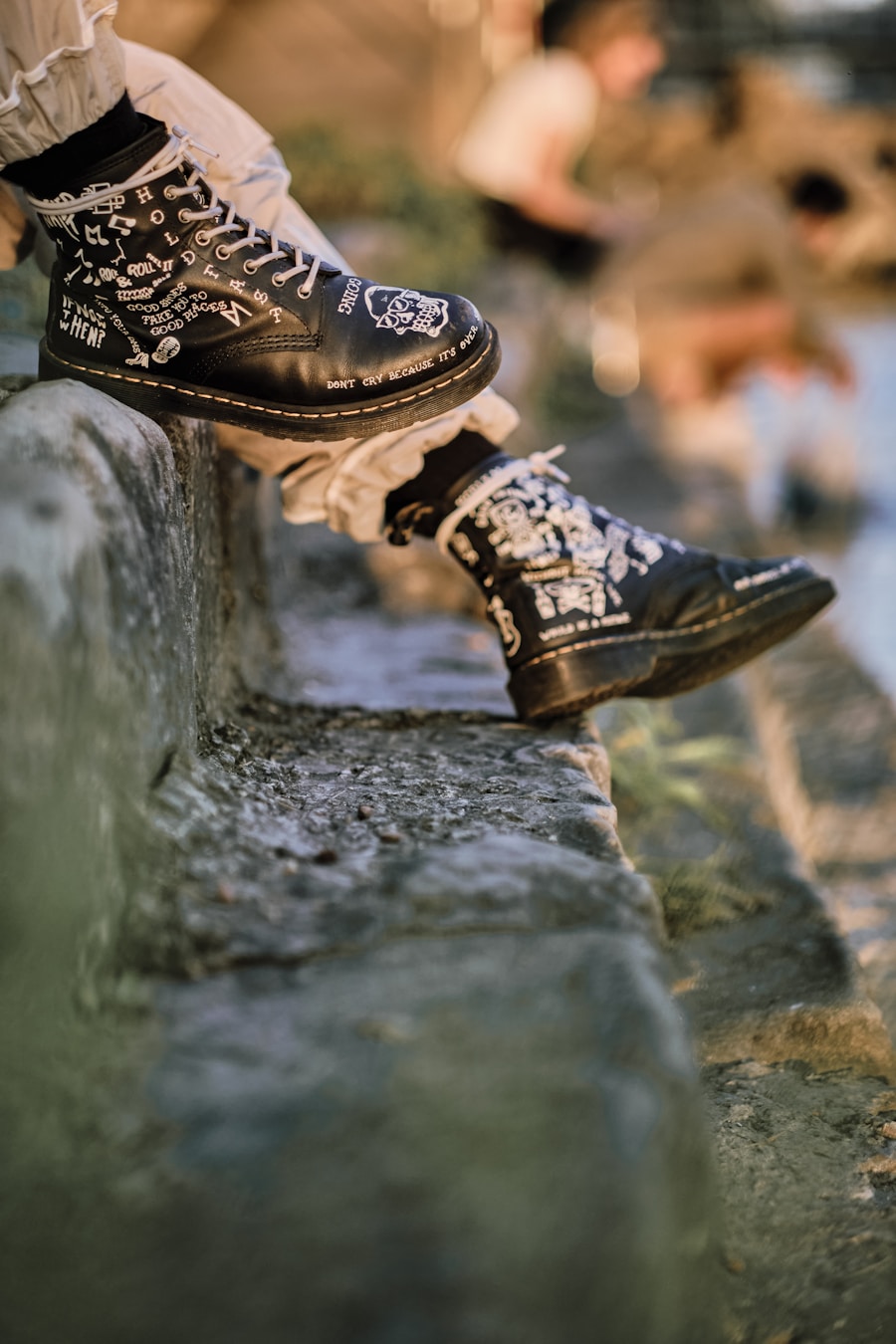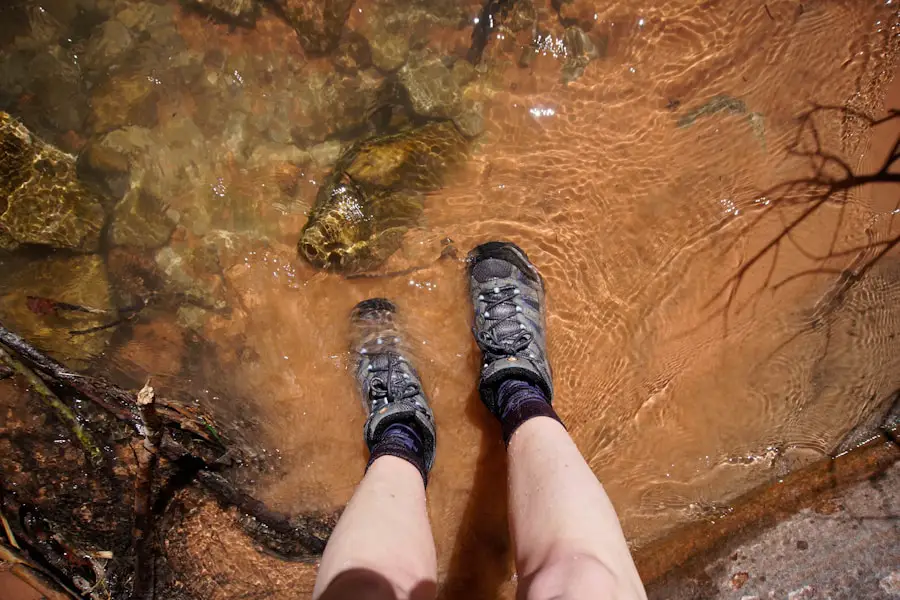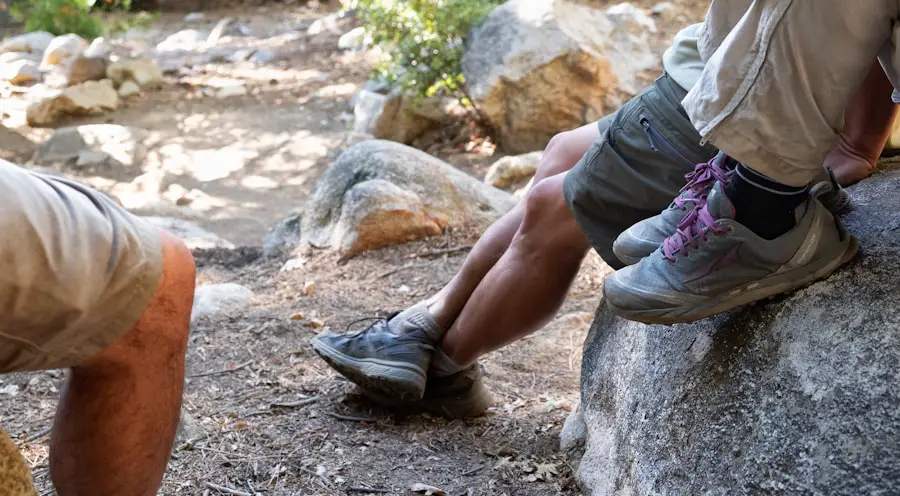Hiking boots are an essential piece of gear for any outdoor enthusiast, providing the necessary support, traction, and protection needed to navigate various terrains. However, the importance of keeping these boots clean extends beyond mere aesthetics. Dirty boots can harbor mud, debris, and even harmful bacteria that can lead to foot problems or damage the materials of the boots themselves.
A clean pair of hiking boots not only enhances performance but also prolongs the lifespan of the footwear, ensuring that they remain reliable companions on the trails. Moreover, clean hiking boots contribute to a more enjoyable hiking experience. When boots are caked with mud or grime, they can become heavy and uncomfortable, leading to fatigue and blisters.
Additionally, dirt and debris can compromise the waterproofing capabilities of the boots, making them less effective in wet conditions. By maintaining clean boots, hikers can ensure optimal performance, comfort, and safety while exploring the great outdoors.
Key Takeaways
- Clean hiking boots are important for maintaining their durability and performance on the trail.
- Preparing your boots for cleaning involves removing the laces and any excess dirt or debris.
- The step-by-step cleaning process includes using a gentle brush, mild soap, and water to scrub away dirt and stains.
- Drying and conditioning your boots properly helps to prevent mold and maintain the leather’s integrity.
- Storing your boots properly in a cool, dry place away from direct sunlight and heat can extend their lifespan.
Preparing Your Boots for Cleaning
Before diving into the cleaning process, it is crucial to prepare your hiking boots properly. Start by removing any loose dirt or debris from the surface. A soft-bristled brush or a damp cloth can be effective for this initial step.
Pay special attention to the soles, as they often collect mud and small stones that can be difficult to remove later. By clearing away this surface dirt, you will make the subsequent cleaning steps more effective. Next, remove the laces and insoles from your boots.
This allows for a more thorough cleaning of both the exterior and interior of the boot. Laces can be washed separately in warm soapy water or placed in a mesh laundry bag and tossed into the washing machine on a gentle cycle. The insoles may require a different approach; they can be scrubbed with a mild detergent and warm water to eliminate odors and bacteria that accumulate from sweat and moisture.
Preparing your boots in this manner sets the stage for a comprehensive cleaning process that will leave them looking and performing their best.
Step-by-Step Cleaning Process

The actual cleaning process for hiking boots can vary depending on the materials used in their construction. For leather boots, it is essential to use products specifically designed for leather care. Begin by applying a leather cleaner with a soft cloth, working it into the material in circular motions.
This helps lift dirt and grime without damaging the leather. After cleaning, wipe away any excess cleaner with a damp cloth and allow the boots to dry naturally away from direct heat sources. For synthetic or fabric boots, a different approach is required.
Use a mixture of warm water and mild soap to create a cleaning solution. Dip a soft brush or cloth into this solution and gently scrub the exterior of the boot, focusing on areas with heavy dirt buildup. Rinse with clean water to remove soap residue, ensuring that no cleaning agents remain that could affect the boot’s performance.
After rinsing, it is advisable to use a specialized cleaner for waterproof membranes if your boots feature such technology.
Drying and Conditioning Your Boots
| Boot Type | Drying Time | Conditioning Frequency |
|---|---|---|
| Leather Boots | 24-48 hours | Every 6 months |
| Rubber Boots | 12-24 hours | After every use |
| Hiking Boots | 24-36 hours | Every 3 months |
Once your hiking boots have been thoroughly cleaned, proper drying is crucial to maintain their integrity. Avoid placing them near direct heat sources such as radiators or in direct sunlight, as this can cause materials to warp or crack. Instead, stuff the boots with newspaper or paper towels to help absorb moisture and maintain their shape while they dry naturally in a well-ventilated area.
This process may take several hours or even overnight, depending on humidity levels. After your boots are completely dry, conditioning is an important step, especially for leather footwear. Leather can become stiff and lose its natural oils over time, leading to cracks and reduced flexibility.
Applying a quality leather conditioner helps restore moisture and suppleness to the material. For synthetic boots, consider using a waterproofing spray designed for outdoor footwear to enhance their water resistance. This dual approach ensures that your boots remain comfortable and functional for future hikes.
Storing Your Boots Properly
Proper storage of hiking boots is often overlooked but is vital for maintaining their condition over time. After cleaning and conditioning your boots, store them in a cool, dry place away from direct sunlight. Avoid placing them in damp areas like basements or garages where moisture can accumulate, as this can lead to mold growth or deterioration of materials.
It is also beneficial to store your boots in their original box or a dedicated shoe bag that allows for airflow. This prevents dust accumulation while still providing adequate ventilation. If you have multiple pairs of hiking boots, consider using silica gel packets or other moisture-absorbing materials in your storage area to keep humidity levels low.
Proper storage not only protects your investment but also ensures that your boots are ready for action whenever you decide to hit the trails.
Tips for Maintaining Clean Boots on the Trail

Maintaining clean hiking boots while on the trail requires proactive measures that can significantly reduce the amount of dirt and debris that accumulates during your adventures. One effective strategy is to choose your hiking routes wisely; avoid muddy paths when possible and stick to established trails where foot traffic has minimized vegetation disturbance. This not only helps keep your boots cleaner but also protects fragile ecosystems.
Another practical tip is to carry a small brush or cloth in your pack specifically for cleaning your boots during breaks. A quick wipe down can prevent mud from hardening and make post-hike cleaning much easier. Additionally, consider using gaiters when hiking in particularly muddy or wet conditions; these protective coverings help shield your boots from excess dirt and moisture while also keeping your legs dry.
Common Mistakes to Avoid
When it comes to cleaning and maintaining hiking boots, several common mistakes can lead to damage or reduced performance. One significant error is using harsh chemicals or abrasive cleaners that can strip away protective coatings or damage materials like leather or synthetic fabrics. Always opt for products specifically designed for outdoor footwear to ensure compatibility with the materials used in your boots.
Another mistake is neglecting to clean the soles of your boots thoroughly. The tread pattern is crucial for traction on various surfaces, and accumulated mud or debris can significantly reduce grip. Failing to remove this buildup not only affects performance but can also lead to uneven wear over time.
Regularly inspecting and cleaning the soles will help maintain optimal traction and extend the life of your hiking boots.
When to Replace Your Hiking Boots
Even with diligent care and maintenance, there comes a time when every pair of hiking boots must be replaced. Signs that it may be time for new footwear include visible wear on the soles, such as significant tread loss or uneven wear patterns that compromise traction. Additionally, if you notice cracks in the material or seams starting to separate, these are indicators that your boots may no longer provide adequate support or protection.
Another critical factor is comfort; if you begin experiencing persistent discomfort or blisters during hikes despite proper fitting and maintenance, it may be time to invest in a new pair. Footwear technology evolves rapidly, offering improved materials and designs that enhance performance and comfort on the trails. Recognizing when to replace your hiking boots ensures that you continue to enjoy safe and comfortable adventures in nature without compromising on quality or performance.
If you’re planning a hiking trip, it’s essential to take care of your gear, including your hiking boots. One important aspect of maintaining your boots is knowing how to wash them properly. For a detailed guide on how to clean your hiking boots, check out this article on
